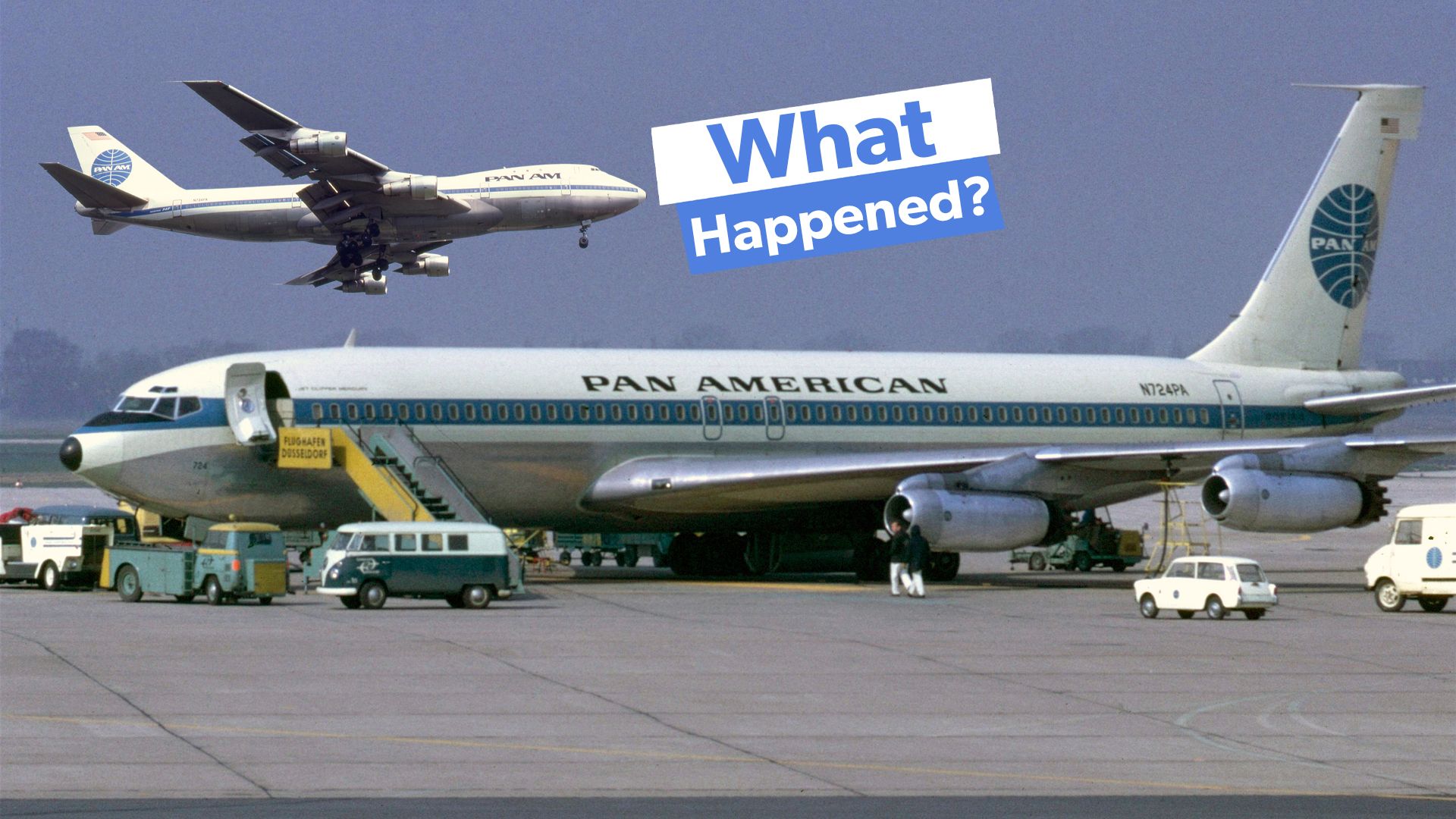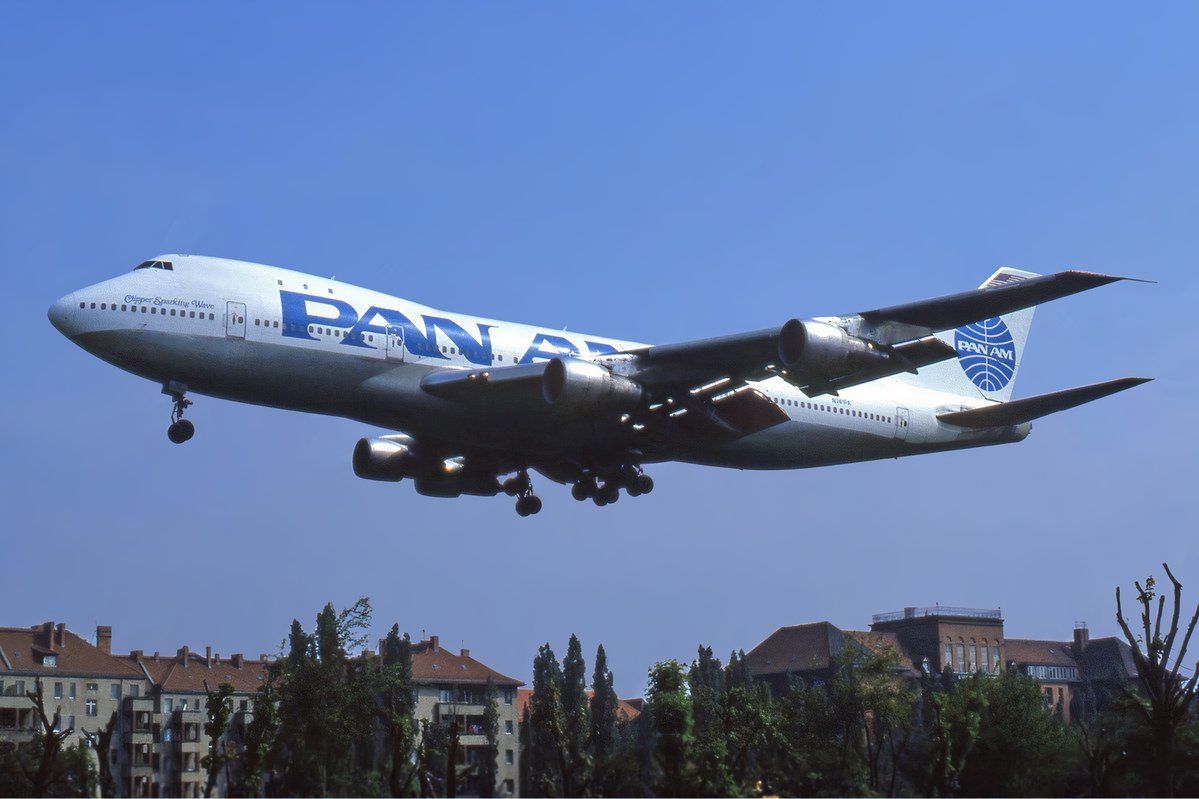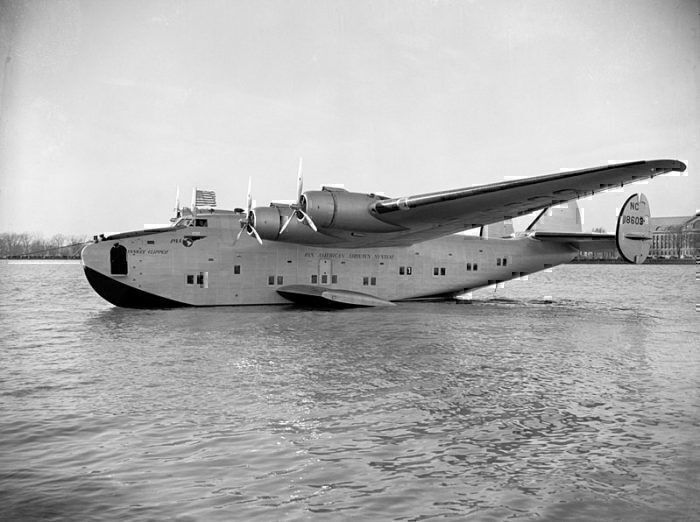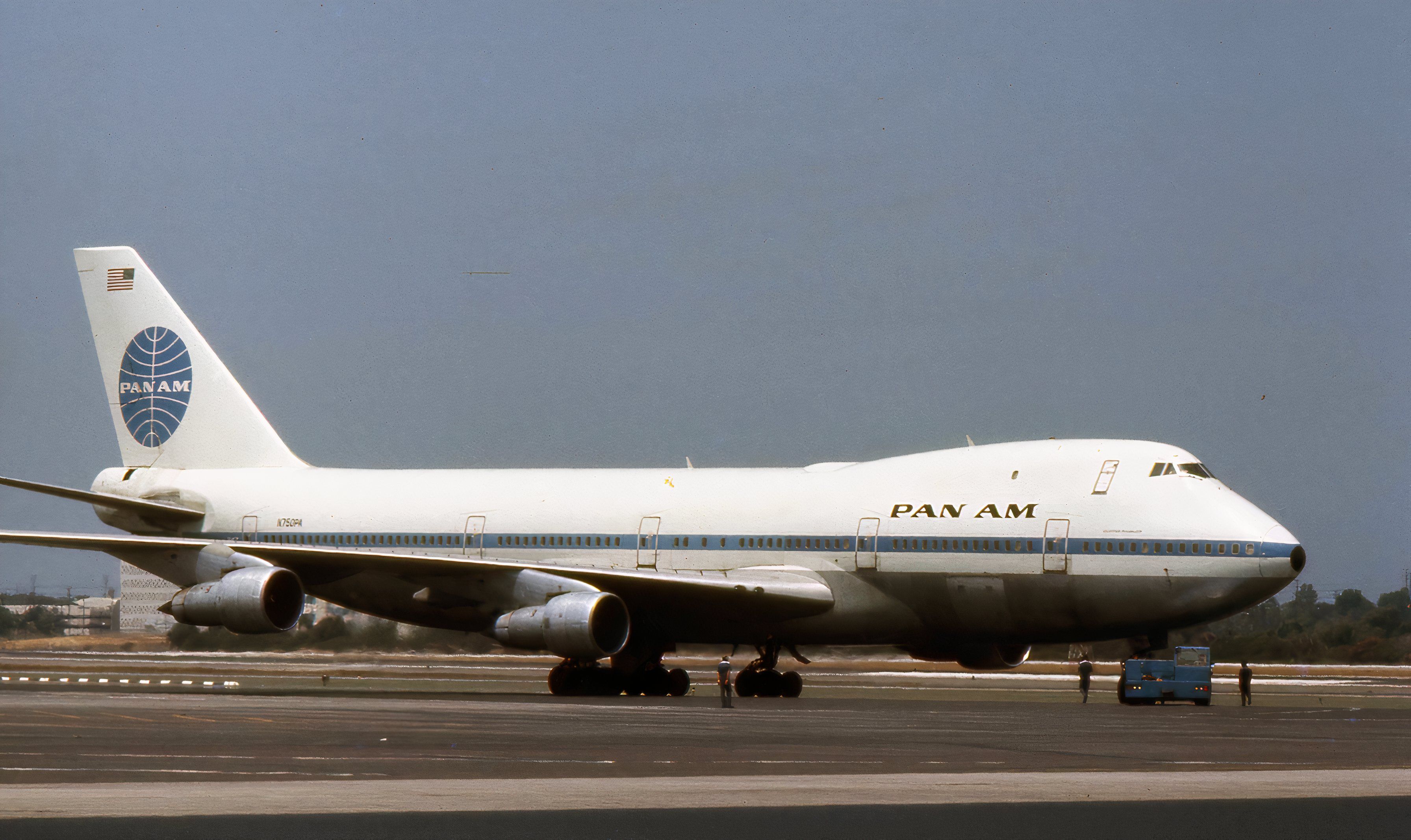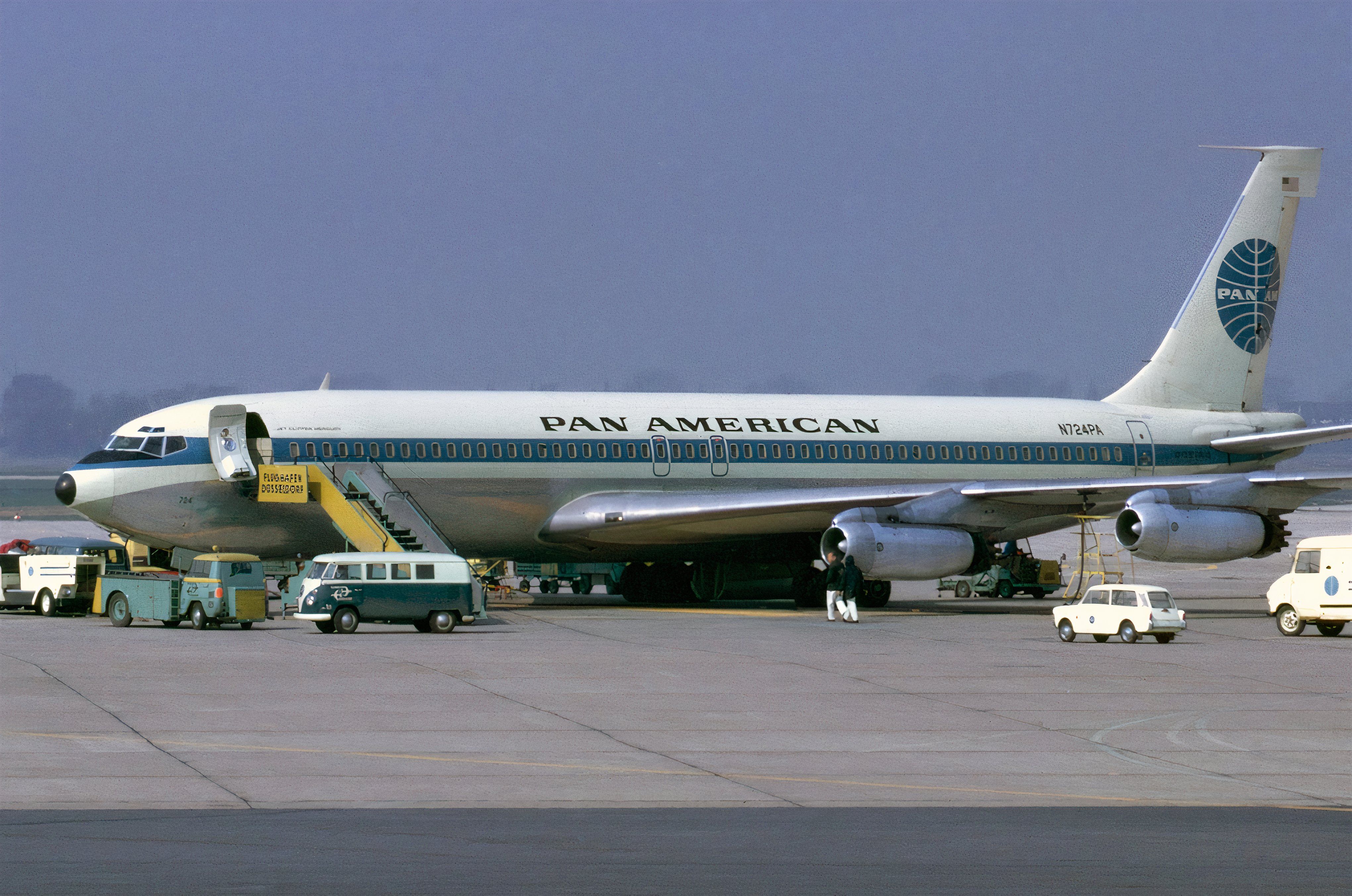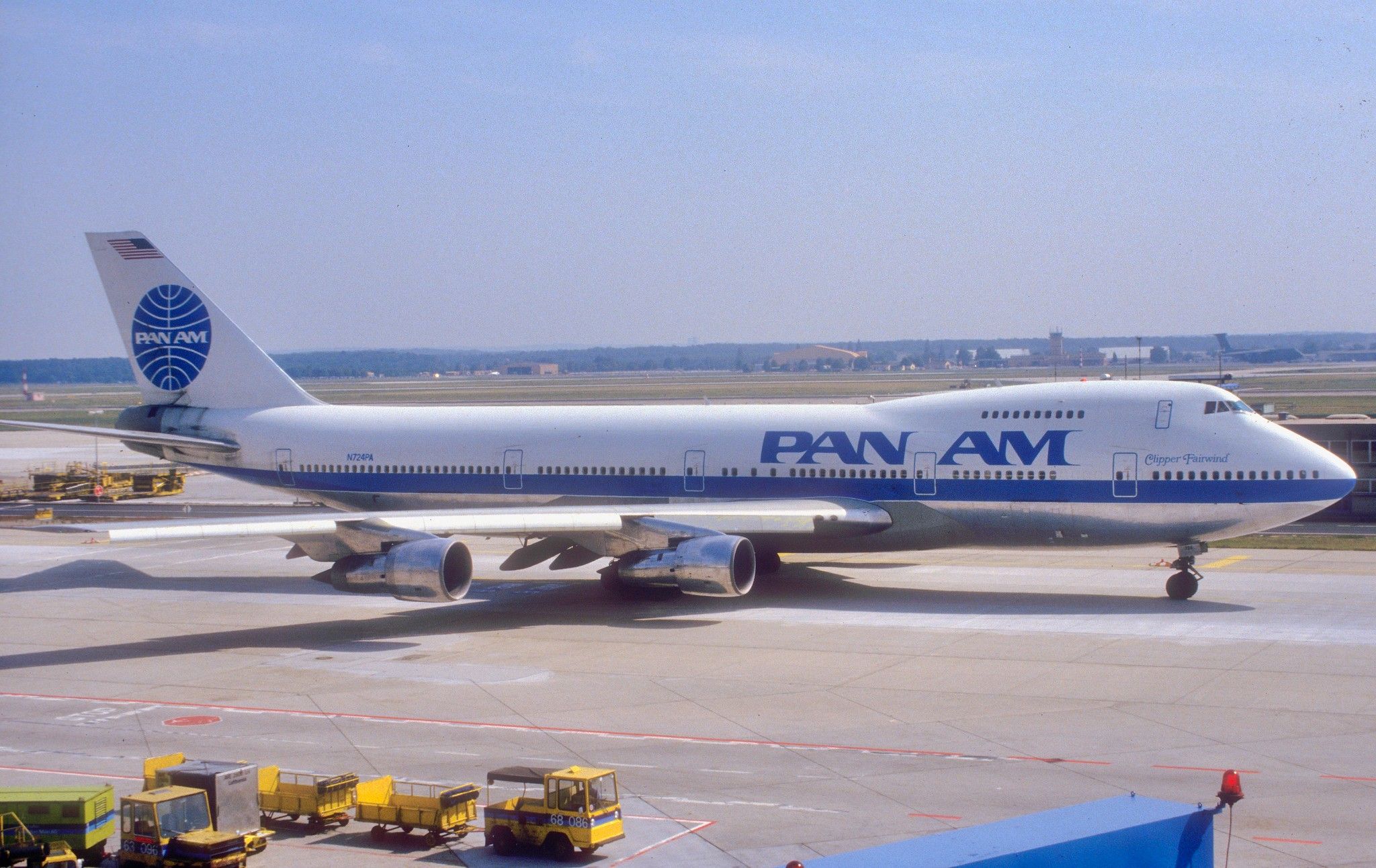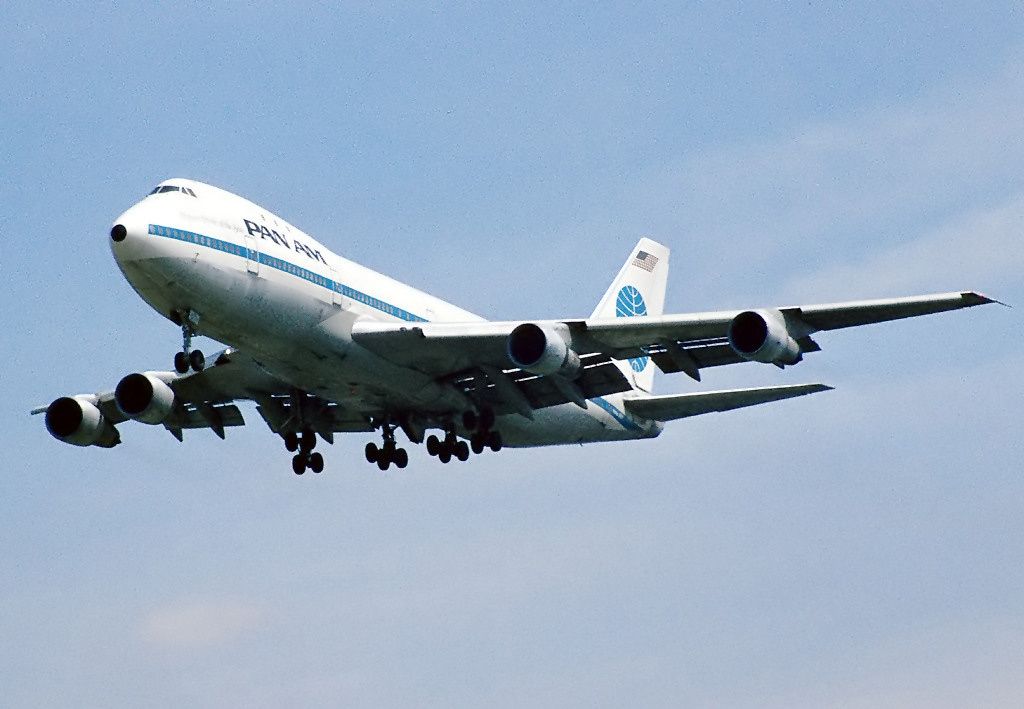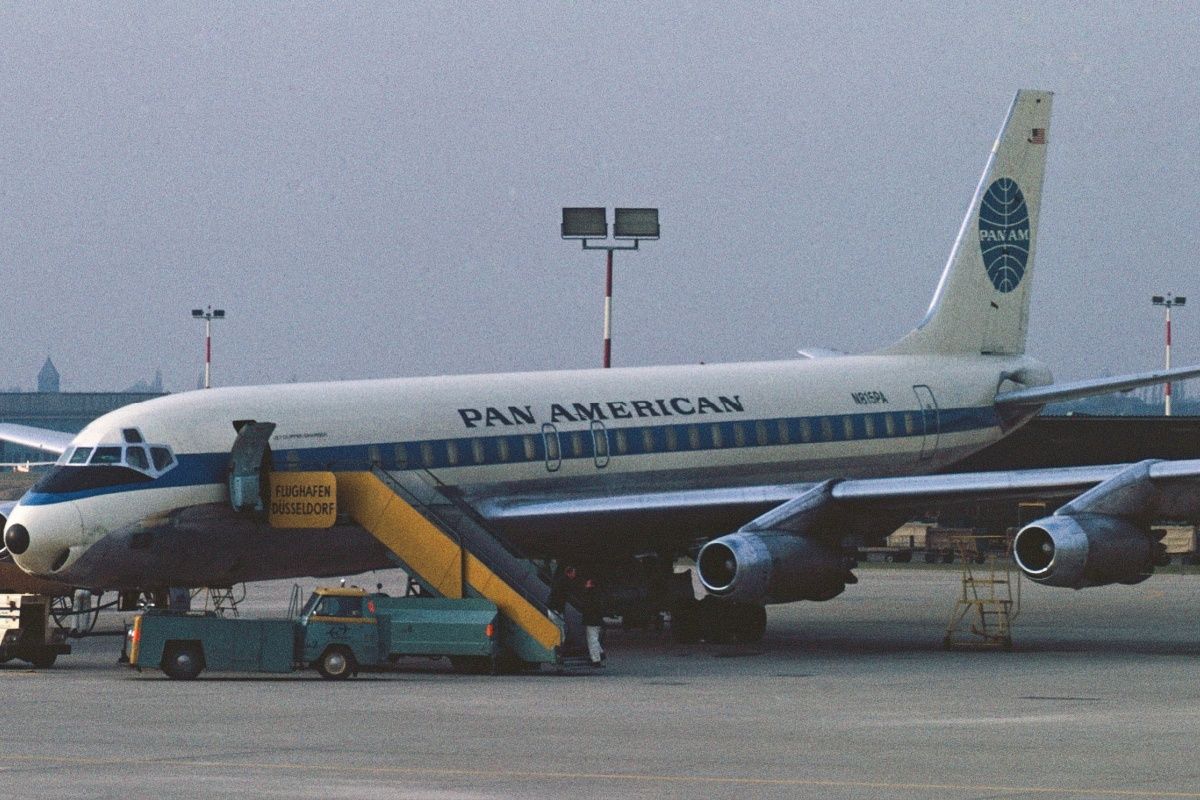Summary
- Pan Am pioneered the computing system PANAMAC with IBM; it was also the first airline to introduce modern economy class.
- Its fleet consisted of 173 aircraft, including 65 Boeing 747s.
- Key events like the 1973 oil crisis, aviation deregulation, and the Lockerbie Bombing led to Pan Am’s bankruptcy.
The Blue Meatball logo of
pan american world airways
– is one of the most recognizable logos in the world. This airline had quite a few distinctions too: it pioneered the computerized reservation systems and Forbes even claimed that this carrier “epitomized the luxury and glamour of intercontinental travel”.
For a carrier as glorious which operated more than 170 aircraft in its lifetime, its bankruptcy was quite a fall from grace. Let’s take a look at the story of Pan Am’s fall.
From first flying mail in 1927 to “around the world” in the 50s
Pan Am’s humble origins can be traced to 1927, when the airline was incorporated as Pan American Airlines. When the airline was founded, it was a shell company, i.e., a company that had no assets or employees. Later, this company, which simply had a name and a bank account, raised $250,000 in startup capital.
In October 1927, the airline started its passenger operations with a Fairchild FC-2 floatplane. Pan American Airlines also operated a scheduled airmail and passenger service between Key West in Florida and Havana in Cuba.
As the carrier accepted newer government contracts, its network increased. In the next decade, the airline started operating floatplanes known as Clippers.
Pan Am Clippers cruised across at a rather unimpressive
(in comparison to modern standards) speed of 155 miles per hour.
In 1937, Pan Am secured contracts to commence transatlantic flights. A couple of decades later, the airline started to operate jet aircraft. In 1958, the carrier had flights from New York to Paris with a stopover in Canada.
Some of Pan Am’s pioneering feats
Here is a list of industry firsts involving Pan Am:
- PANAMAC, a revolutionary computer system, was designed after Pan Am collaborated with IBM. The system was used for reservations and digitally tracking flights.
- Pan Am created the first modern economy class, with this class operated by the airline being called “The Rainbow”. According to CNtraveler, the airline reduced seat sizes to accommodate more people.
- It launched the first regularly scheduled around-the-world passenger service on its flight 001. The passengers would board at the San Francisco Municipal Airport (which would later become San Francisco International Airport). According to WIRED, “the entire journey would touch down in Honolulu, Hong Kong, Bangkok, Delhi, Beirut, Istanbul, Frankfurt, London and finally New York.
-
It was the first airline to add the
queen of the skies
to its fleet.
In addition to these feats,
Pan Am also created the elliptical Worldport
, a terminal building at the
New York John F. Kennedy International Airport
.
The fleet of Pan Am
According to data from planespotters.net, Pan Am operated 173 aircraft in the year before its dissolution. Eighteen of these were operated by Pan AM Express, whose fleet consisted the
De Havilland
Dash 7s and ATR-42s.
Pan Am operated 65
Boeing 747
s. The Queen of the Skies was by far the most popular aircraft used by Pan Am, with the second most popular aircraft being the
airbus a310
s and
douglas dc-8
s. Pan Am operated 21 of these aircraft types each. The following table shows other aircraft in Pan Am’s fleet.
Photo: Peter Scharkowski | Shutterstock
|
Aircraft type |
Number of aircraft |
|---|---|
|
Airbus A300 |
13 |
|
Boeing 720 |
9 |
|
Boeing 737 |
16 |
|
Lockheed L-1011 TriStar |
12 |
|
McDonnell Douglas DC-10 |
16 |
Reasons behind the fall of the carrier
Let’s take a look at a few events that led to this iconic airline with so many distinctions falling from its grace.
The 1973 Global Oil Crisis
Before the oil crisis hit the aviation industry in 1973, Pan Am had invested heavily in adding the Boeing 747 to its fleet. Pan Am, like many other airlines, had believed that air travel would grow steadily over the years. However, in 1973, the Organization of Arab Petroleum Exporting Countries (OAPEC) announced an embargo against a number of nations, including the US.
As the carrier had a number of aircraft that weren’t fuel-efficient, this increased the airline’s operating costs. By 1976, the carrier had accumulated losses worth $364 million.
And the Airline Deregulation Act followed half a decade later
President Jimmy Carter introduced the Airline Deregulation Act in 1978. While the act proved beneficial for smaller airlines such as Southwest, it led to increased competition against carriers such as Pan Am. New airlines, some of which were based on low-cost models, allowed customers to travel in cheap fares compared to luxury experiences in Pan Am.
Fleet restructuring that came at the wrong time
In 1984, Pan Am ordered new Airbus (both wide-body and narrow-body) aircraft. This came against a backdrop of a precarious financial position that had forced the carrier to sell its non-core assets. Following the losses, the airline also ceased flying between Delhi, Bangkok and Hong Kong, as the routes weren’t as popular as the airline had expected.
The Lockerbie Bombing and the eventual bankruptcy
A New York-bound 747 departing from London suffered a terrorist attack in December 1988. The episode is often remembered as the
Lockerbie Bombing attack that took the lives of 270 people
. Pan Am faced a lawsuit of $300 million, and the airline was subject to multiple safety fines imposed by the
Federal Aviation Administration
(FAA). In 1991, Pan Am filed for bankruptcy.
Vestiges of Pan Am’s operations
Pan Am’s vestiges can be seen on the Boeing 747. Joe Sutter, lead designer of the Boeing 747 program, was quoted to have said:
“The 747 wouldn’t have happened [without the input of Pan Am’s CEO, Juan Trippe]. Then you wonder, what would the industry look like today without it?”
Photo: Peter Scharkowski l Shutterstock
You can see the aircraft operated by Pan Am at the Delta Flight Museum too. Some of the other less-visible imprints of the carrier exist on the routes operated by other airlines:

